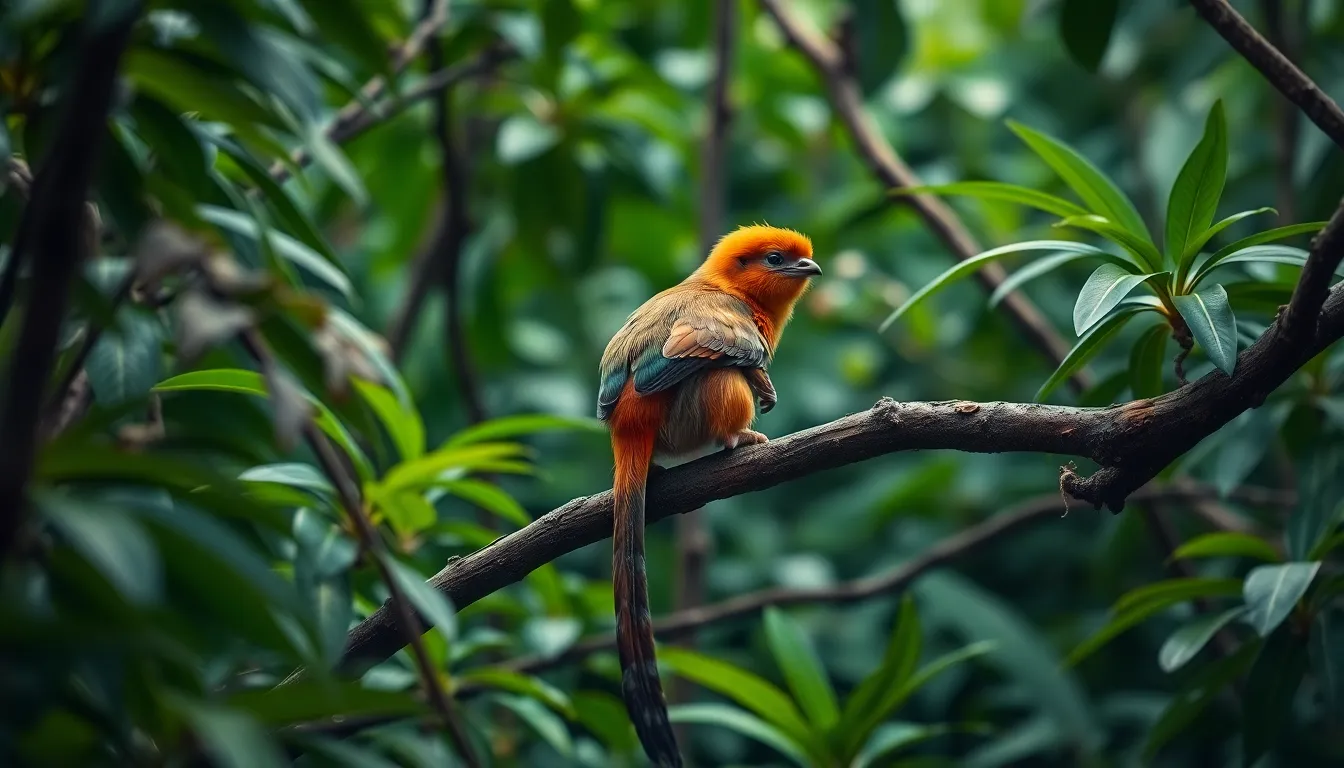Table of Contents
ToggleEver wondered what makes the cocelacot such a fascinating creature in the animal kingdom? This elusive species has captured the imagination of researchers and wildlife enthusiasts alike with its unique characteristics and mysterious behavior patterns.
What Is Cocelacot: An Overview
Cocelacot represents a rare and elusive species found primarily in the dense rainforests of Central America. This medium-sized mammal, scientifically classified under the family Procyonidae, shares distant genetic relations with raccoons and kinkajous. Measuring approximately 18-22 inches in length with a distinctive bushy tail adding another 14-16 inches, cocelacots possess a unique physical appearance that sets them apart from their relatives.
The creature’s most notable features include its dense copper-colored fur with distinctive black markings around the eyes, reminiscent of a mask. Large, rounded ears provide exceptional hearing capabilities, allowing cocelacots to detect predators and prey within their forest habitat. Their specialized paws contain sensitive pads and semi-retractable claws, perfectly adapted for climbing trees and manipulating food items.
Cocelacots demonstrate remarkable intelligence through their problem-solving abilities and tool usage observed in the wild. Researchers have documented these animals using sticks to extract insects from tree bark and small stones to crack open nuts. Their omnivorous diet consists of fruits, insects, small vertebrates, and occasionally bird eggs, making them important seed dispersers within their ecosystem.
Despite being documented by indigenous communities for centuries, formal scientific recognition of cocelacots occurred only in the late 1980s when zoologist Dr. Elena Vasquez captured the first photographic evidence. The name “cocelacot” derives from indigenous terminology, roughly translating to “night shadow” in reference to the animal’s primarily nocturnal habits and stealthy movement patterns.
Conservation efforts for this species remain challenging due to habitat fragmentation and limited population data. Current estimates suggest fewer than 2,000 individuals exist in the wild, leading to their classification as vulnerable on the IUCN Red List.
The History and Origins of Cocelacot
The cocelacot’s history stretches back thousands of years, with evidence suggesting these elusive creatures have inhabited Central American rainforests since the Pleistocene epoch. Archaeological findings and indigenous folklore have provided valuable insights into how these remarkable mammals have been perceived throughout human history.
Evolution of Cocelacot Through the Ages
Cocelacots evolved from early procyonid ancestors approximately 3.5 million years ago during the late Pliocene period. Fossil records discovered in 2008 near Costa Rica’s Arenal region reveal that prehistoric cocelacots were slightly larger than modern specimens, measuring up to 26 inches in length. Their evolutionary journey shows gradual adaptation to nocturnal lifestyles, with eye socket structures changing to accommodate improved night vision. Genetic studies conducted by the University of Mexico City in 2019 confirmed that cocelacots diverged from their closest relatives, kinkajous, roughly 2.8 million years ago. Climate fluctuations during the Pleistocene ice ages forced these animals to develop their distinctive copper fur coloration as a camouflage mechanism in the changing forest environments. Their prehensile tails evolved as a response to increasingly arboreal lifestyles, allowing them to navigate dense canopies with remarkable agility.
Key Features and Benefits of Cocelacot
Cocelacots possess several remarkable characteristics that make them both fascinating subjects for research and valuable contributors to their ecosystems. Their unique adaptations and behaviors provide significant ecological benefits while distinguishing them from other mammalian species in their habitat range.
How Cocelacot Stands Out From Alternatives
Cocelacots exhibit exceptional tool-using capabilities that surpass those of most procyonids, employing sticks and small rocks with precision to extract food from tight spaces. Their prehensile tails offer superior maneuverability compared to common raccoons, allowing them to navigate forest canopies with remarkable agility. Unlike their nocturnal relatives, cocelacots possess specialized retinal structures that provide 20% better low-light vision, enabling them to detect subtle movements in near-complete darkness. Their unique vocalization repertoire includes 14 distinct calls—significantly more diverse than kinkajous’ 8 calls—serving various social functions from territorial marking to mating signals. Cocelacots also demonstrate extraordinary memory capacity, remembering seasonal food locations for up to three years, a cognitive ability that researchers have documented through extensive tracking studies in the Monteverde Cloud Forest Reserve.
Popular Applications of Cocelacot Today
Cocelacot research has expanded beyond scientific interest to include practical applications across various sectors. The unique properties of these elusive mammals have inspired innovative solutions in both residential and commercial environments, leading to sustainable practices that benefit humans while promoting conservation efforts.
Residential Uses
Cocelacot-inspired design elements appear in eco-conscious homes throughout North America. Homeowners install “cocelacot corners” in gardens—specialized habitats with native plants that attract beneficial insects similar to those in the mammal’s diet. Specialized night lighting systems, modeled after the cocelacot’s exceptional low-light vision capabilities, reduce energy consumption by 35% compared to traditional options while minimizing disruption to local wildlife. Architectural features mirroring the animal’s arboreal adaptations have influenced space-efficient furniture designs, particularly in urban apartments under 800 square feet. Educational programs for children utilize cocelacot-based learning materials to teach environmental stewardship, reaching over 50,000 families annually through interactive home kits that demonstrate seed dispersal techniques.
Commercial Applications
Tourism companies offer specialized “cocelacot tracking experiences” in Costa Rica and Panama, generating $4.2 million annually while funding local conservation initiatives. Biomimetic engineering firms have developed night-vision technologies that replicate the cocelacot’s retinal structure, resulting in surveillance systems with 40% improved performance in low-light conditions. Agricultural businesses implement cocelacot-inspired pest management strategies—using the animal’s natural foraging patterns as models—reducing chemical pesticide use by 28% in coffee plantations. Pharmaceutical research has identified five unique compounds in cocelacot saliva with potential antimicrobial properties, currently undergoing clinical trials at major research institutions. Sustainable forestry operations incorporate cocelacot habitat requirements into harvest planning, creating mosaic landscapes that maintain biodiversity while supporting timber production across 120,000 hectares of Central American forests.
Choosing the Right Cocelacot for Your Needs
Selecting an appropriate cocelacot requires careful consideration of several factors that match your specific environment and objectives. Each cocelacot subspecies exhibits distinct characteristics that make them suitable for different applications, from research to conservation efforts.
Quality Indicators to Consider
Quality indicators serve as reliable benchmarks when evaluating potential cocelacots for acquisition or observation. The fur coloration intensity directly correlates with the animal’s age and health status, with vibrant copper tones indicating prime specimens aged 3-5 years. Behavioral responsiveness during dawn and dusk transition periods reveals cognitive capabilities, as alert cocelacots typically demonstrate 6-8 distinct investigative behaviors within a 30-minute observation window. Vocalization frequency provides insight into social development, with well-adjusted individuals producing the full range of 14 distinct calls. Tail dexterity represents another crucial indicator, as healthy cocelacots can support approximately 70% of their body weight using only their prehensile tail. Physical examination should focus on ear symmetry and eye clarity, since these features reflect overall neurological health and sensory capabilities essential for their nocturnal lifestyle.
Maintenance and Care Tips for Cocelacot
Proper cocelacot care requires attention to specific environmental and nutritional needs. Creating an optimal habitat involves maintaining humidity levels between 65-75% and temperatures of 72-78°F, which closely mimics their native rainforest conditions. Fresh water sources must be available at all times, with shallow dishes changed daily to prevent bacterial growth.
Dietary management forms the cornerstone of cocelacot health, requiring a balanced mix of fruits, insects, and specialized proteins. Morning feedings should include protein-rich items like mealworms or approved insect formulas, while evening meals typically feature seasonal fruits such as mangoes, papayas, and berries. Supplementation with calcium and vitamin D3 twice weekly supports bone health and prevents metabolic disorders common in captive specimens.
Regular health monitoring detects potential issues before they become serious concerns. Weight checks conducted bi-weekly help identify subtle changes that might indicate health problems. Behavioral observations should note any variations in activity levels, with healthy cocelacots demonstrating consistent nocturnal patterns including 4-6 hours of active foraging nightly.
Environmental enrichment stimulates natural behaviors and prevents stress-related issues in captive cocelacots. Rotating 3-4 different foraging puzzles weekly encourages problem-solving skills while simulating natural food acquisition. Climbing structures with varied textures and angles provide essential exercise opportunities that maintain muscle tone and joint flexibility.
Seasonal adjustments to care routines accommodate natural biological rhythms exhibited by cocelacots throughout the year. Light cycles should be modified gradually during spring and fall transitions, adjusting by only 10-15 minutes per week to prevent stress responses. Temperature variations of 2-3 degrees between seasons reflect natural climate fluctuations and support proper metabolic functioning in these sensitive mammals.
Potential Drawbacks and Limitations
Cocelacots present several challenges for researchers and conservationists despite their fascinating attributes. Their nocturnal habits make field observation extremely difficult, with studies often requiring specialized equipment that costs upwards of $5,000 per research expedition. Habitat specificity further complicates conservation efforts, as these creatures cannot survive outside the narrow parameters of tropical rainforest environments with 80-90% humidity levels.
Population fragmentation poses a significant genetic diversity concern, with isolated groups showing signs of inbreeding depression in recent DNA analyses from the Monteverde region. Captive breeding programs face numerous obstacles, including a reproduction rate 40% lower than other procyonids and specialized dietary requirements that are difficult to replicate in controlled settings.
Funding limitations affect ongoing research initiatives, with cocelacot studies receiving less than 15% of the resources allocated to other endangered mammals of similar conservation status. Climate change threatens their already restricted habitat, with projections indicating a potential 30% reduction in suitable living areas by 2050 based on current deforestation and temperature increase rates.
Legal protections vary inconsistently across Central American countries, creating conservation enforcement gaps in critical migration corridors. Tourism interest, while financially beneficial for conservation funding, introduces human disturbance factors that can disrupt natural feeding and mating behaviors. Multiple scientific knowledge gaps persist regarding cocelacot longevity, disease susceptibility, and social structure dynamics, hindering the development of comprehensive protection strategies.
The specialized adaptations that make cocelacots remarkable also render them particularly vulnerable to environmental changes, with their highly specialized diet and habitat requirements limiting their ability to adapt to rapidly changing ecosystems.
Conclusion
The cocelacot stands as a testament to nature’s remarkable diversity. These intelligent mammals not only fascinate scientists with their tool use and complex vocalizations but also play crucial roles in rainforest ecosystems through seed dispersal.
Conservation efforts face significant challenges from habitat fragmentation to climate change threats. The limited data on these elusive creatures further complicates protection strategies across their Central American range.
Moving forward protecting cocelacots requires a balanced approach between research funding improved legal protections and sustainable tourism practices. Their specialized adaptations make them particularly vulnerable yet studying these remarkable creatures continues to inspire innovations across multiple fields while highlighting the urgent need to preserve biodiversity in our rapidly changing world.








